| Date | Text | |
|---|---|---|
30 Nov 1945

Reginald Aldworth Daly |
Reginald Aldworth Daly (astronomy) Reginald Aldworth Daly of Harvard University first proposes a giant impact hypothesis to account for formation of the moon. |
|
30 Nov 1945

Karl von Frisch |
Karl von Frisch (biology) Karl von Frisch publishes "Die Tänze der Bienen" ("The dances of the bees"). |
|
30 Nov 1945
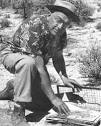
Edmund Jaeger |
Edmund Jaeger (biology) Edmund Jaeger discovers and later documents, in The Condor, a state of extended torpor, approaching hibernation, in a bird, the common poorwill. |
|
30 Nov 1945
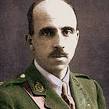
Harold Gillies |
Harold Gillies (medicine) Harold Gillies begins to perform sex reassignment surgery on Michael Dillon, including the first female-to-male transsexual phalloplasty. |
|
30 Nov 1945

Chance Brothers |
Chance Brothers (medicine) Chance Brothers of Smethwick, England, produce the first all-glass syringe with interchangeable barrel and plunger, allowing easy mass-sterilisation of components. |
|
30 Nov 1945

Alfred Gilman |
Alfred Gilman (medicine) Alfred Gilman, with Frederick S. Philips, first publish the results of trials of anti-cancer chemotherapy, using mechlorethamine, carried out with Louis S. Goodman. |
|
30 Nov 1945
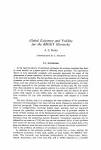
BBGKY hierarchy |
BBGKY hierarchy (physics) The BBGKY hierarchy of equations for s-particle distribution functions is applied to the derivation of kinetic equations by Nikolay Bogolyubov in a paper received in July 1945 and published in 1946 in Russian and in English. The related kinetic transport theory is considered by John Gamble Kirkwood in a paper received in October 1945 and published in March 1946. The first paper by Max Born and Herbert S. Green considering a general kinetic theory of liquids is received in February 1946 and published on 31 December 1946. |
|
30 Nov 1945

Faiza Al-Kharafi |
birth Faiza Al-Kharafi Faiza Al-Kharafi, Kuwaiti electrochemist |
|
30 Nov 1945

Israel Aharoni |
death Israel Aharoni Israel Aharoni (born 1882), zoologist. |
|
01 Jan 1946

Atomic Energy Research Establishment |
Atomic Energy Research Establishment (physics) Atomic Energy Research Establishment established at Harwell, Oxfordshire under John Cockcroft. |
|
10 Jan 1946
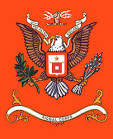
United States Army Signal Corps |
United States Army Signal Corps (astronomy) The United States Army Signal Corps' Project Diana bounces radar waves off the Moon. |
|
17 Jan 1946

Clarence E. McClung |
death Clarence E. McClung Died 17 Jan 1946 at age 75 (born 5 Apr 1870). Clarence Erwin McClung was an American geneticist and paleontologist who discovered the role of chromosomes in sex determination in a species of grasshopper. In a key paper, he reported that sperm exist in two forms, each with a different chromosome configuration. Thus, he was one of the first (1901) to deduce that chromosomes determine the sex of offspring. McClung also studied how the behaviour of chromosomes in the sex cells of different organisms affects their heredity. His theory was one of many that inspired scientists to pursue investigations such as the Human Genome Project, an attempt to map the structure and location of all human genes. He also published on Cretaceous fishes. |
|
14 Feb 1946
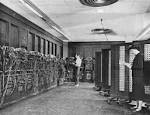
ENIAC |
ENIAC (computer science) ENIAC, the first non-classified all-electronic Turing complete computer, built under the direction of J. Presper Eckert and John Mauchly, is announced and dedicated at the University of Pennsylvania's Moore School of Electrical Engineering. It is programmable by plugboard and uses conditional branching. |
|
08 Mar 1946

Frederick W. Lanchester |
death Frederick W. Lanchester Frederick W. Lanchester (born 1868), automotive engineer. |
|
22 Mar 1946

U.S. Rocket |
U.S. Rocket In 1946, the first rocket built in the United States left the Earth's atmosphere, whereas Germany had launched a rocket the year before. The U.S. rocket was launched from White Sands, New Mexico, and attained an altitude of 50 miles. |
|
23 Mar 1946

Gilbert N. Lewis |
death Gilbert N. Lewis Gilbert N. Lewis (born 1875), chemist; first to isolate deuterium. |
|
26 Mar 1946
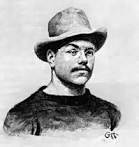
Gerhard Heilman |
death Gerhard Heilman Gerhard Heilman (born 1859), paleo-ornithologist. |
|
02 May 1946

Simon Flexner |
death Simon Flexner Simon Flexner (born 1863), pathologist and bacteriologist. |
|
11 May 1946

Robert Jarvik |
birth Robert Jarvik Robert Jarvik, American co-inventor of the Jarvik-7 artificial heart |
|
14 Jun 1946

John Logie Baird |
death John Logie Baird John Logie Baird (born 1888), inventor. |
|
22 Jun 1946

Jet airmail |
Jet airmail In 1946, jet airplanes were used to transport mail for the first time |
|
24 Jun 1946
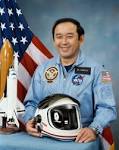
Ellison Onizuka |
birth Ellison Onizuka Ellison Onizuka (killed 1986), American astronaut |
|
02 Jul 1946

Richard Axel |
birth Richard Axel Richard Axel, American physiologist, Nobel prize winner |
|
14 Jul 1946

Benjamin Spock |
Benjamin Spock (medicine) Dr. Benjamin Spock's The Common Sense Book of Baby and Child Care is first published in New York; it becomes one of the biggest best-sellers of all time. |
|
18 Jul 1946
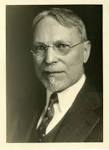
Charles Hubbard Judd |
death Charles Hubbard Judd Died 18 Jul 1946 at age 73 (born 20 Feb 1873). American psychologist who was a leader adopting the scientific method in the study and reform of education. His own research included the nature and development in reading, language, number ideas and their development, writing, and the higher mental processes. He examined the psychological issues of school curriculum and the pedagogical methods used in education. He believed an overarching educational objective was to developing the learner's social consciousness, rather than the expression of an individual's instinct, but to participate in a cooperative social experience. He filed an affidavit at the Scope's trial in strong support of the teaching of evolution in schools. |
|
11 Aug 1946
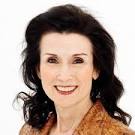
Marilyn vos Savant |
birth Marilyn vos Savant Marilyn vos Savant, American polymath |
|
13 Aug 1946
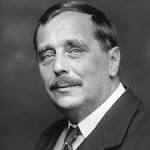
H. G. Wells |
death H. G. Wells H. G. Wells (born 1866), scientific populariser. |
|
07 Sep 1946
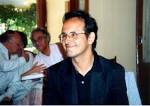
Francisco Varela |
birth Francisco Varela Francisco Varela (died 2001), Chilean-born biologist and philosopher |
|
16 Sep 1946

James Hopwood Jeans |
death James Hopwood Jeans James Hopwood Jeans (born 1877), mathematician and scientist. |
|
28 Sep 1946

Morinobu Endo |
birth Morinobu Endo Morinobu Endo, Japanese chemist |
|
02 Oct 1946
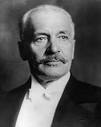
Ignacy Mościcki |
death Ignacy Mościcki Ignacy Mościcki (born 1867), chemist and President of Poland. |
|
04 Oct 1946

Barney Oldfield |
death Barney Oldfield Barney Oldfield (born 1878), automobile racer. |
|
14 Oct 1946
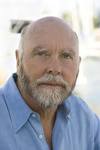
J. Craig Venter |
birth J. Craig Venter Born 14 Oct 1946. American molecular geneticist who pioneered the use of automated gene sequencers. In 1990, he developed "expressed sequence tags" (ESTs), a new strategy for gene discovery and tagging that revolutionized the biological sciences. In 1995, Venter, in collaboration with Hamilton Smith, determined the DNA sequence of the entire genome (all the genetic material of an organism) of Hemophilus influenzae, a bacterium that causes earaches and meningitis in humans. The achievement marked the first time that the complete sequence of a free-living organism had been deciphered, and it was accomplished in less than a year. He founded the Institute for Genomic Research (TIGR). By 2000, his company Celera Genomics sequenced the human genome. |
|
14 Oct 1946

Kay Redfield Jamison |
birth Kay Redfield Jamison Kay Redfield Jamison, American clinical psychologist |
|
10 Nov 1946

Peter Scott |
Peter Scott (biology) Peter Scott opens the Slimbridge Wetland Reserve in England. |
|
13 Nov 1946

Artificial snow |
Artificial snow In 1946, artificial snow from a natural cloud was produced over Mount Greylock, Mass., for the first time in the U.S. An airplane spread small pellets of dry-ice (frozen carbon dioxide) for three miles at a height of 14,000 ft. Although the snow fell an estimated 3,000 feet, it evaporated as it fell through dry air, and never reached the ground. The experiment was carried out by Vincent J. Schaefer of the General Electric Company. Earlier the same year, he had produced snow in a cold chamber, on 12 Jul 1946. |
|
08 Dec 1946

Snow-melting apparatus |
Snow-melting apparatus In 1946, the first test in the U.S. of a snow-melting apparatus embedded in a sidewalk was made in New York City. The department store, Best & Co. installed 15 coils made up from 4,530 feet of pipe. A mixture of about 67% water with 33% Zerex was circulated, effective to prevent freezing to as low as -5 deg.F. It was first put to use shortly thereafter, on 26 Dec 1946, during a blizzard. This was not the first method to melt snow devised in the U.S. On 27 May 1890, black American inventor F.J. Farrell was issued a patent for an "Apparatus for melting snow" (No. 428,670), which was a cast-iron box laid beneath the street gutter and heated with steam. |
|
11 Dec 1946

patent |
patent (computer science) Frederick Williams receives a patent for a random-access memory device. |
|
31 Dec 1946

Roy Porter |
birth Roy Porter Roy Porter (died 2002), English medical historian |